Reconstructing The World Of Our Ancient Ancestors
16:18 minutes
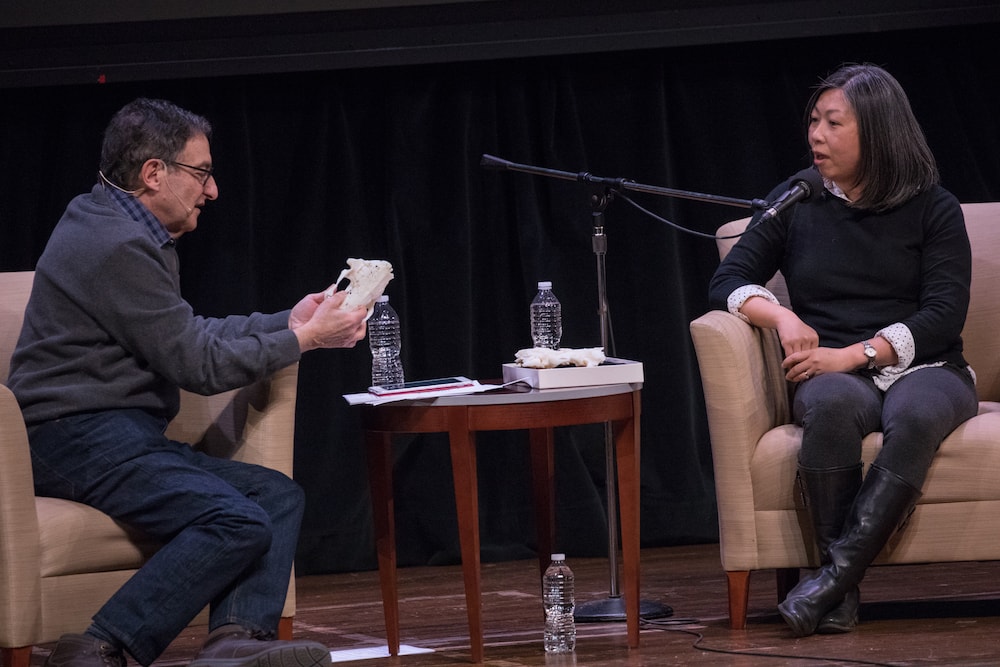
Paleontologists and anthropologists might look to the fossilized bones of early hominins to help fill in the evolutionary story of our species. But paleoecologists like Denise Su, curator and head of paleobotany and paleoecology at the Cleveland Museum of Natural History, are more interested in what type of environments these early human ancestors were living in millions of years ago.
[Complex human behaviors may have evolved in our earliest ancestors.]
In a conversation recorded live in Miami University’s Hall Auditorium in Oxford, Ohio, Su talks about how she uses fossilized plants, pollen, and bones to reconstruct these early environments in Africa and Asia, and how these conditions could have influenced the evolution of our early ancestors. Explore some of the fossil finds from Su’s excavations out in the field below.
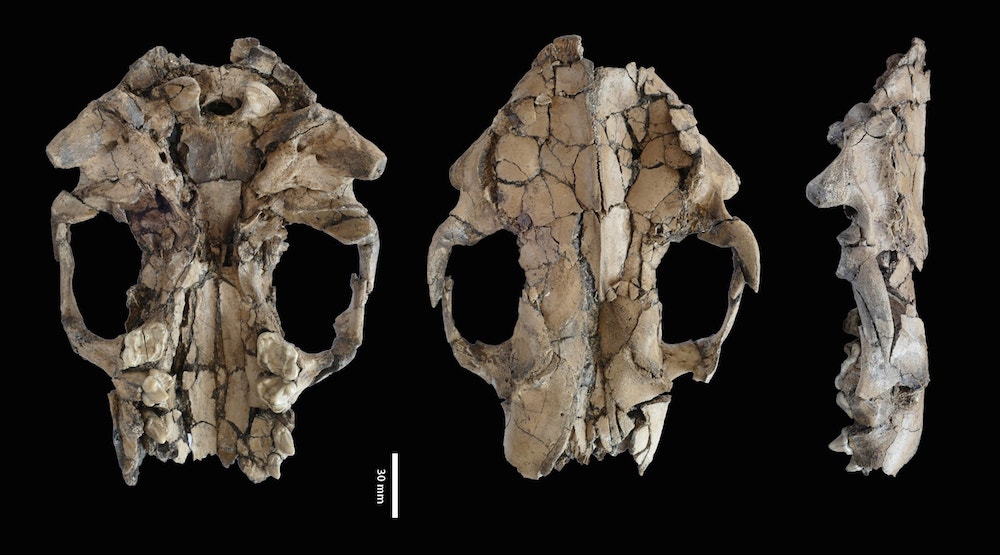
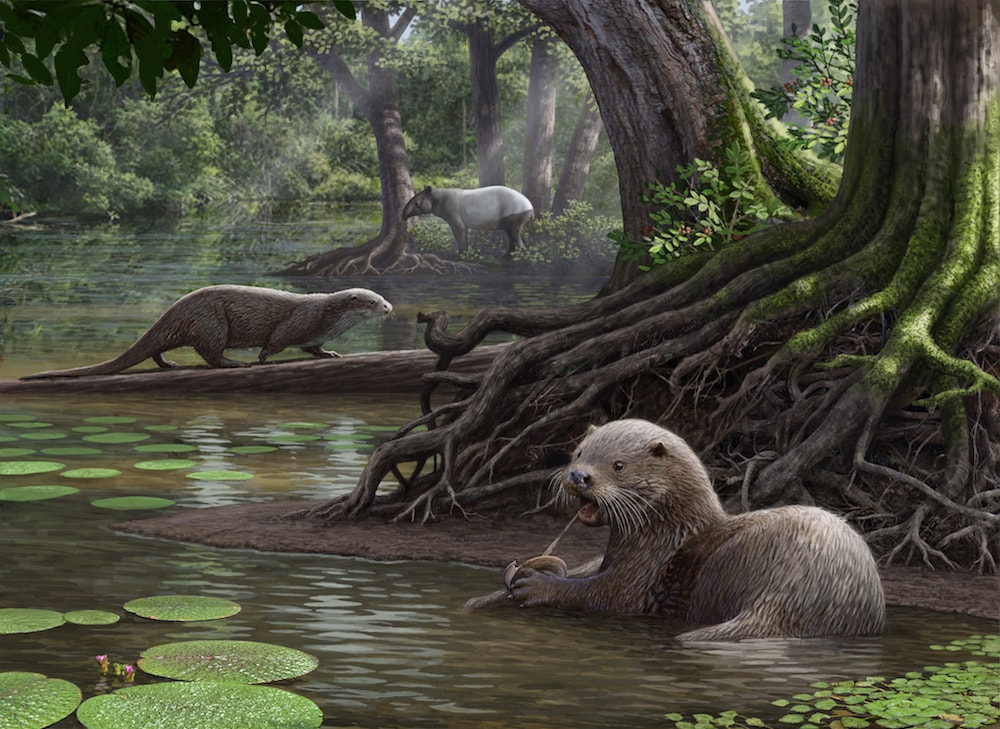
[Meet the women who made the internet.]
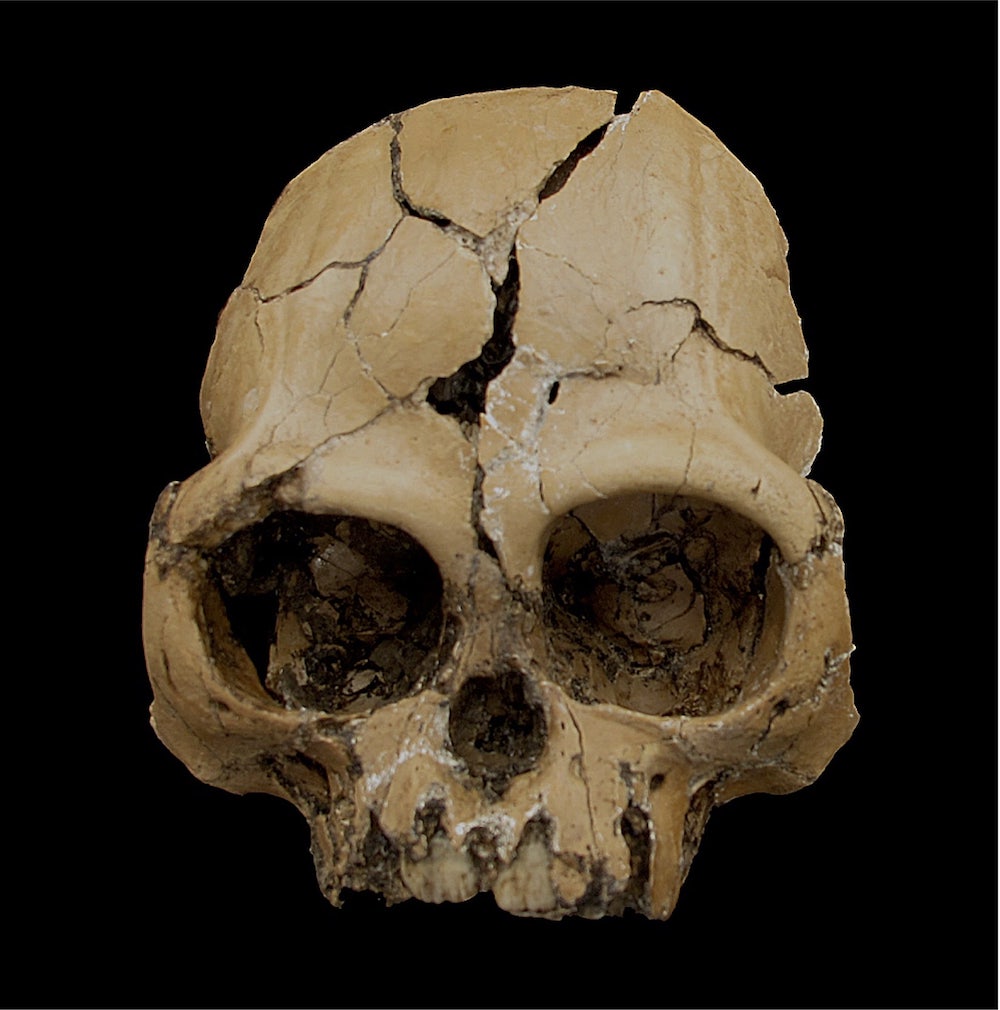
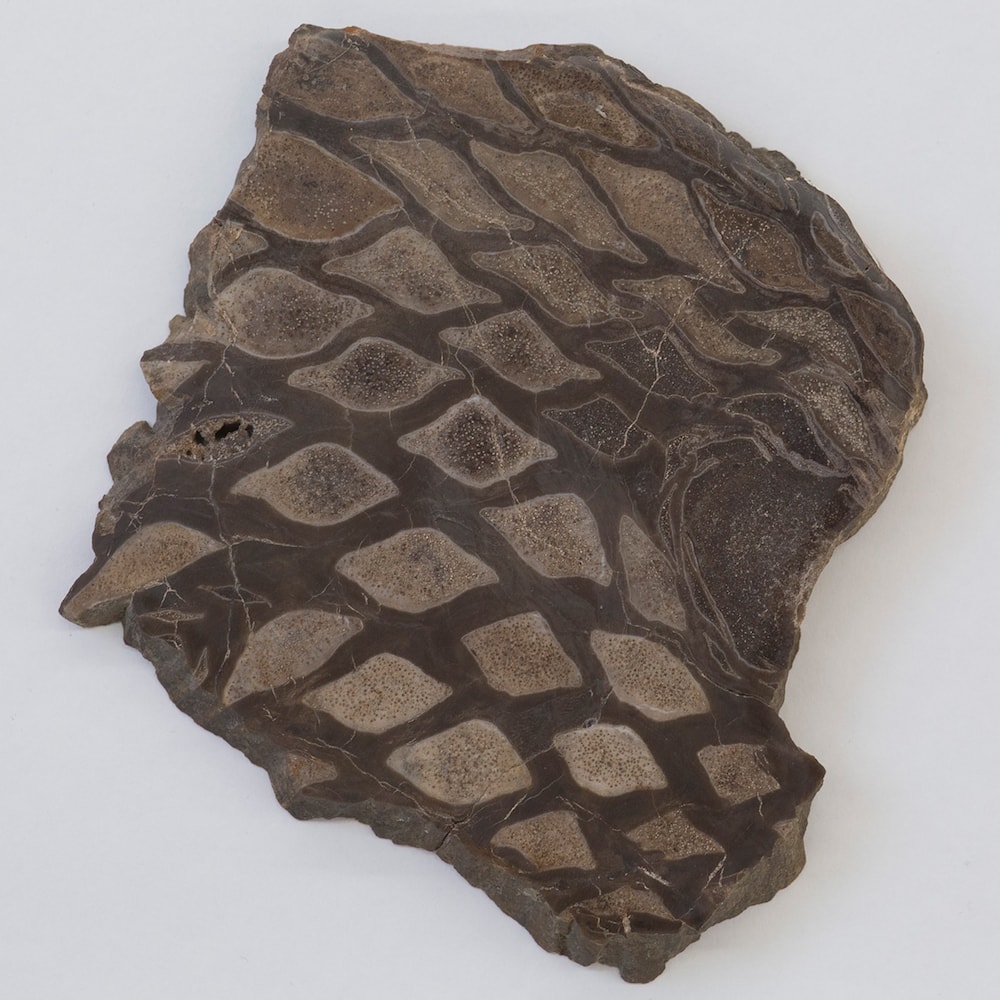
[The mystery of the Namibian fairy circles.]
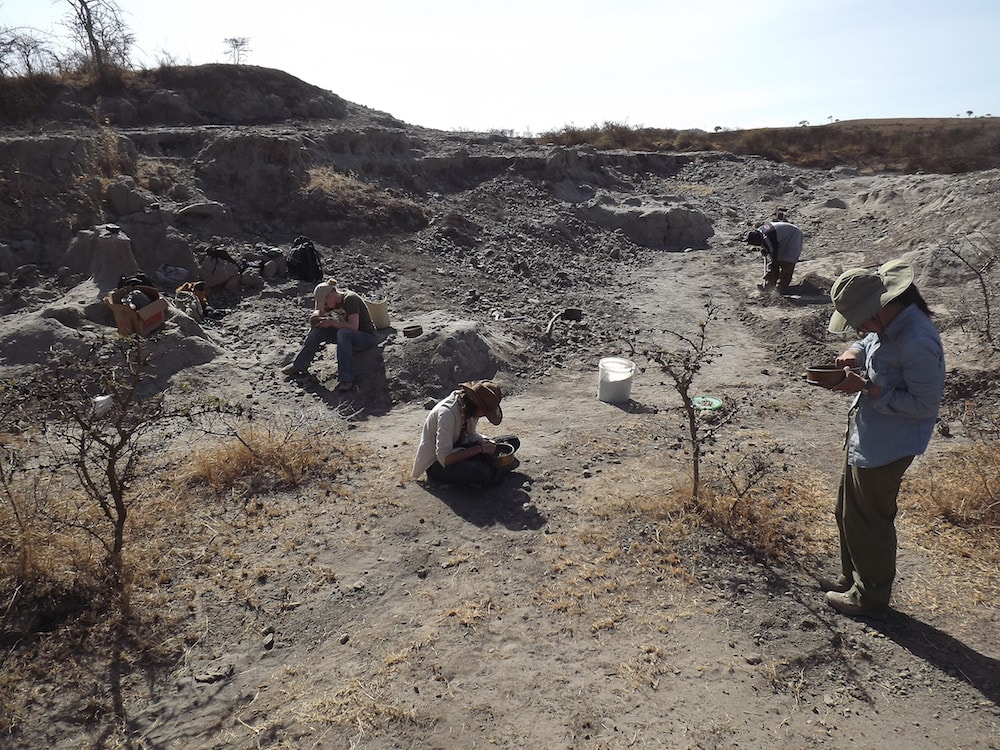
Denise Su is the Curator and Head of Paleobotany & Paleoecology at the Cleveland Museum of Natural History.
IRA FLATOW: This is Science Friday. I’m Ira Flatow coming to you from Miami University’s Hall Auditorium in Oxford, Ohio.
[APPLAUSE]
IRA FLATOW: Every few weeks it seems like we hear of a new fossilized skull or a bone of one of our ancient ancestors. And each of these finds adds a little piece to the sprawling complicated puzzle of where we came from.
Or where our ancestors came from. And the other important question is how did they live? What was their environment like? Reconstructing ancient environments is called paleoecology and my next guest is an expert in digging up the clues to our origin.
Denise Su is the curator and head of paleobotany and paleoecology at the Cleveland Museum of Natural History. Welcome to Science Friday.
DENISE SU: Thank you so much for having me.
IRA FLATOW: You know, when you dig up a fossil of a hominid, one of our early ancestors, you’re not really interested in the animal. You want to know what was the environment like around. Where it was living. But aren’t you missing out on the good stuff when you don’t want to know that?
DENISE SU: I don’t think so because an environment is really crucial to our understanding of how we evolved. We are part of an ecosystem. What happens around us affects us.
And particularly that time when really we didn’t have nearly these culture interventions that we have today. So it’s really important to understand what the habitats were that are early hominid ancestors were living in.
IRA FLATOW: So it’s like trying to reconstruct a house and you just have a few of the beams lying around.
DENISE SU: Kind of and you have to go find the rest yourself. We try to do it from everything because our data is so scarce. And since I’m really interested in the whole ecosystem that means I’m looking at the animals, the plants if they’re there.
If there’s ancient soil that’s preserved then that’s great. Because soil tells us a lot about what was actually going on. It can tell us about the vegetation. And then also what kind of depositional environment it was like.
IRA FLATOW: Let’s show everybody what kind of stuff that you get to pick up at a site like this. Now what is this that we’re looking at?
DENISE SU: So this is actually a cycad but this is from the Pennsylvanian. This is from about 300 million years ago. No hominids then, I can assure you. This is a specimen that’s from my collection at the Cleveland Museum of Natural History.
IRA FLATOW: Now sometimes we see scientists trying to look at the pollen. Why is pollen so important at a site?
DENISE SU: Well pollen, it’s actually vegetation. It tells us directly what the vegetation was like. Pollen preserves more easily than these big plant parts, like leaves, because they’re preserved in the ancient soil.
IRA FLATOW: And does the pollen give you an idea of how old, maybe, the site is also?
DENISE SU: Sometimes.
IRA FLATOW: Yeah?
DENISE SU: It depends. Usually not but it does give us a sense of what plants were there. And also pollen can travel very far. So it can tell us about generally what the regions environment was like.
IRA FLATOW: I’m not taking phone calls this hour but as I say, there are microphones in the audience up there. On balcony and on the sides if you’d like to step up to the mic and ask a question.
Now I know you’ve worked at a site in Tanzania. Right? Tell us what site that was and what you found. Because Lucy was nearby, right?
DENISE SU: Lucy was nearby. This is Laetoli, Tanzania. This is just in the Ngorongoro game reserve. And this is where the famous fossilized set of footprints of Australopithecus afarensis was found. And that’s the species that Lucy belongs to.
And this is a really interesting site because we don’t have a large body of water there. I mean, right now there isn’t any. I mean, it’s pretty barren. It looks like that.
But in the past it was much more wooded. There was more bushland and shrubland. But unlike other sites, unlike where Lucy was found, there was not a large prominent river or a lake. And that really changes the vegetation structure a lot.
IRA FLATOW: Why would anyone live in that site? It’s a bad neighborhood, is what you’re saying.
DENISE SU: Well, yeah actually. It was a really marginal neighborhood for afarensis. And so you can see the difference in terms of the relative abundance. The population density of afarensis at Laetoli versus Hadar, which is where Lucy was found. It’s much higher over there.
IRA FLATOW: OK. Let’s go right here to the audience question. Yes, sir.
AUDIENCE: Obviously big ticket items are the full leaves or teeth or bones or those are big ticket items. Pollen is much more fine, much smaller. What about stuff like insects? Like fungus? The decomposers of our ecosystems? Do those provide more information?
DENISE SU: Yes. So insects don’t preserve very well. Actually the fossil record of insects is very, very poor to begin with. At Laetoli, actually we do have insect remains, which is pretty incredible.
We have pockets where there was basically a seasonal pond. And so there is not very much. It’s shallow. It’s very calm.
And insects and actually different berries and stuff fell in. And so it was covered and preserved really quickly. So we actually have some insects from Laetoli.
IRA FLATOW: When I heard this I just knew I had to ask you. And you know what I’m going to ask you, right?
DENISE SU: Do I? I don’t know.
IRA FLATOW: You’ve found fossils of bunnies. Lots and lots of bunnies.
DENISE SU: Yes. Lots and lots of bunnies.
IRA FLATOW: Why so many bunnies? What were they doing?
DENISE SU: Yeah, so we have lots. Bunnies are actually the most common animal at Laetoli. It is very odd. Everywhere else you go Hadar, anywhere else, basically you might get four or five specimens.
And we think it’s directly related to the environment. That the environment was just really ideal for them. We have tens of thousands of specimens of bunnies. So if there’s a graduate student out there wants to study the evolution of bunnies, please let me know.
IRA FLATOW: It just happened to be the right place at the right time.
DENISE SU: I think it was just the right place. The habitat was perfect for them. And plus, you know, bunnies reproduce like bunnies.
So if you have a few good seasons– and you know we’re talking about over a time period of this is a 300,000 packet of time. So if you have some good seasons for the bunnies and overturns a 1,000 years and it’s a great environment for them.
IRA FLATOW: Right. I’m trying to picture what bunnies eat if there are so many of them. Here’s an idea then. What was vegetation like in that area when the bunnies were there?
DENISE SU: It was probably relatively open. There would have been lots of patches of grassland actually. And then shrubland and bushland and probably river and woodland along ephemeral river systems. So we didn’t have any permanent rivers there.
IRA FLATOW: Wow. This is bunny heaven. It looks like. Let me go to, did have somebody in the audience? Yeah, step up to the mic if you have a question.
How does knowing about the environment that you like to study, how does that help fill in our knowledge about us? Our ancient ancestors? I mean, what connection do we have to the bunnies?
DENISE SU: Well it really helps us understand how it is that we evolved. There are some really key biological, morphological, features that we have today that we don’t really know why we evolved them. We walk on two legs, right? I mean that is our defining characteristic.
No other primate does that. At least habitually. And we have no choice but to walk on two legs. And I would argue that us standing up on two legs is the first step towards what we are today.
Our cell phones. Can you imagine using that if you were actually running around on four limbs. Right? And so understanding the morphological adaptations, or the origins, of this type of really crucial traits for our evolution, it really depends on understanding the context.
IRA FLATOW: Now I know I know you’ve also done paleontology work in the Yunnan province, in China.
DENISE SU: Yes.
IRA FLATOW: At a site that what? Was about 6 million years old in an old coal mine?
DENISE SU: Yep, that’s right.
IRA FLATOW: Why is that such a good place? Why are you interested in that?
DENISE SU: Well, so that was actually a bit of a side trip for me, I guess. 6 million year old sites are very rare. And so when a colleague said, there are some elephant teeth down there. It looks like it might be that time period you’re interested in.
And I thought, why not. We’ll just go take a look. And it is this coal mine. I mean it is, as you can see there, it is a big hole in the ground. And it was an active coal mine until we started working there.
And it’s just like this incredible sight. And it’s a time period that’s just not sampled well. And it’s a really important time period for understanding human origins because this is around the time that we appeared.
But we appeared in Africa. But there are a lot more apes outside of Africa, in Eurasia. And so it was really interesting to go outside Africa to see what was going on elsewhere in the world during that time period.
IRA FLATOW: You found the complete fossilized skull of an ape? In this same spot?
DENISE SU: Yeah, in the same spot. And there it is. It’s pretty cute, right?
IRA FLATOW: How old would that skull be?
DENISE SU: 6 million years.
IRA FLATOW: 6 million, that’s old.
DENISE SU: Yeah it is. It’s actually the latest surviving ape of its lineage. It’s Lufengpithecus And it’s this juvenile cranium. It’s hard to really estimate how old it was because we don’t know what the growth of developmental timing of this ape is. But it had its first permanent molar that’s already out.
IRA FLATOW: But it’s a rare find.
DENISE SU: It’s very rare find. There are other Lufengpithecus crania that’s been found in China, but they’re all pretty crushed and distorted. So this one was minimally distorted. And it’s pretty complete as you can see.
The bones are incredibly fragile. When we found it we couldn’t believe it. My colleague who was actually the specialists, he’s the expert, and studying Miocene apes, looked at and he was like, that can’t really be what I think it is, right? It is a bird?
IRA FLATOW: Is it a bird?
DENISE SU: Is it a bird, because he was looking at it upside down. And the bone was so fragile. Oh, he’s going to kill me that I’m telling this story.
IRA FLATOW: It’s all right, no one’s here. No one’s listening to it. We’re among friends.
DENISE SU: And so it’s very fragile and he was looking at it from upside down. And I’m looking at him thinking, oh my gosh. For a lot of people, this is the find of a lifetime.
IRA FLATOW: Wow. Wow, that’s great to have. Let’s go up to the balcony. Yes, question from you up there. Step up to the mic.
AUDIENCE: Yes. Thank you. There’s a lot that’s been written recently in the last couple of decades from Loren Cordain and on, about nutrition in paleolithic time. I was just curious.
I’ve always wanted to ask an actual expert what their thoughts are on what we ate. And kind of what our activity was maybe 2 and 1/2 million years to pre-agricultural times.
DENISE SU: Well, probably a lot of just what could be gathered really. We don’t really know the exact kinds of vegetation that was in. We do know that early hominins ate a mix of C3 and C4 plants. So anything with fruits and leaves.
And then C4 plants are usually, in Africa, are grasses. They probably weren’t eating the grass blades themselves. But they could have been eating the grass seeds or the sedges.
And by the time you get to 2 million years they were also eating meat. Now whether or not they were hunting or scavenging, that’s a perennial question. But meat would have been part of the diet as well.
IRA FLATOW: We’re talking with Denise Su, in case you just joined us. She is curator and head of paleobotany and paleoecology at the Cleveland Museum of Natural History. We are here in the Miami University Hall auditorium in Oxford, Ohio on Science Friday. Thank you. Science Friday from WNYC Studios.
How does what you’re finding in China inform what you find in Africa? Are they linked or how does this all connect in your mind?
DENISE SU: Yeah, so 6 million years, this is really that transition period. Sort of at the end of the Miocene fauna basically. This is the group of animals that came before we came along. And so at this site in China you actually can see this transition of the Apes, which is part of the relicted fauna from before 6 million years.
And then this new intrusion, these new migrants. We also have a monkey there at the same level. And this is the first time that an ape and a monkey has been recorded from the same place in the same time. And so we have this mix of fauna that’s really more one, that’s older.
That is from older time period. That’s adapted for a more moist and wooded type environment. And then the ones that are adapted for drier and more open environments. In the end these are the newer lineages that are coming in from outside.
IRA FLATOW: You look very excited about your life.
DENISE SU: I love my work. I’m amazed people pay me to do this.
IRA FLATOW: Shh.
DENISE SU: Oh, yeah that’s right. Don’t tell my boss.
IRA FLATOW: Don’t tell your boss. Might be listening. OK, let’s talk about then the history of your work. Do you remember your first fossil find? Do you remember?
DENISE SU: Yes, actually I was 20. I went to Koobi Fora, which is in Kenya. And I found a primate radius. I was incredibly proud of myself.
IRA FLATOW: A primate what?
DENISE SU: Primate radius. Sorry. The arm bone. One of the armbones. The one on the thumb side.
IRA FLATOW: Where did you find it?
DENISE SU: At Koobi Fora. It’s next to Lake Turkana in Kenya.
IRA FLATOW: That’s a very rich place–
DENISE SU: It’s a very rich place.
IRA FLATOW: –for fossil hunting.
DENISE SU: Yes.
IRA FLATOW: And so you were all excited about this?
DENISE SU: I was incredibly thrilled. I was the only person to find a fossil that day. So that made me even more proud.
[APPLAUSE]
IRA FLATOW: You thought of yourself as being Mary Leakey at that moment.
DENISE SU: You know, I don’t know that I thought of myself as Mary Leakey. But I thought this is the most incredible feeling I have ever felt. And I was hooked.
And that was it. I went back, changed my major, and here I am.
IRA FLATOW: That’s hard to reconstruct, to get that feeling back again, I would imagine. On another find. Have something as–
DENISE SU: Maybe not quite that rush. But I have to admit, every single time I go out to the field and I find a fossil it’s still such a thrill. Because no one else has seen that 3.6 million years. I’m the first person to pick it up. And it’s an incredible feeling.
IRA FLATOW: There must be, if I were to do that I would have some self-doubt.
DENISE SU: Yeah?
IRA FLATOW: Right, and well, I’m not a scientist. But I would say, I can’t be that lucky that I’m the only person who’s ever seen that. And that’s what I mean by self-doubt like, can this really be what I think it is?
DENISE SU: My first year on the field, yeah, I felt like that all the time. And you have to get your eye in. Your search image in.
Although some people never quite pick it up. We have graduate students who are out there for five weeks and at the end of it they’re still picking up rocks for the most part.
IRA FLATOW: Wow
DENISE SU: Yeah.
IRA FLATOW: Well we’re very happy to have you here.
DENISE SU: Well, thank you.
IRA FLATOW: Thank you for taking time to be with us today. Denise Su is the curator and head of paleobotany and paleoecology at the Cleveland Museum of Natural History.
That’s about all the time we have. Our heartfelt thanks to Gregory Crawford, Patty Liberator, and Kate Rudolph. Kevin Reynolds and all the folks at WVXU and Cincinnati Public Radio.
And everyone here at the Hall auditorium for making this wonderful evening possible. And to our production partners at the City University of New York. Thank you all for coming.
[APPLAUSE]
Copyright © 2018 Science Friday Initiative. All rights reserved. Science Friday transcripts are produced on a tight deadline by 3Play Media. Fidelity to the original aired/published audio or video file might vary, and text might be updated or amended in the future. For the authoritative record of Science Friday’s programming, please visit the original aired/published recording. For terms of use and more information, visit our policies pages at http://www.sciencefriday.com/about/policies/
Alexa Lim was a senior producer for Science Friday. Her favorite stories involve space, sound, and strange animal discoveries.